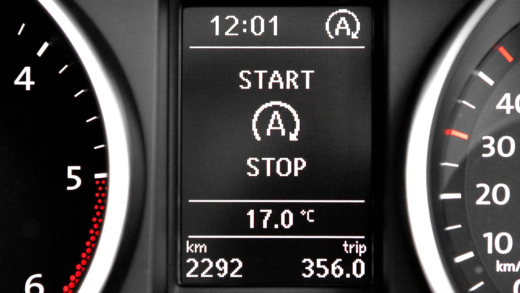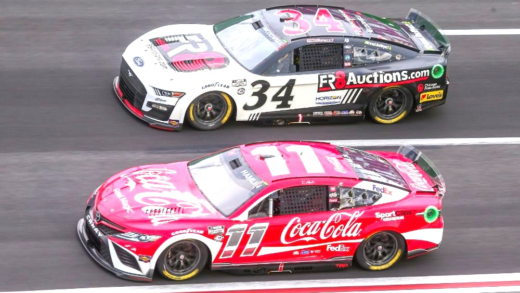NASCAR camber settings play a critical role in tire performance, handling, and accident prevention. Drivers experience direct impacts from these settings, which influence their confidence and car control. Ideal camber settings vary based on track characteristics and turn types. Technological advancements enable precise management of camber settings, enhancing race strategy. Driver preferences for camber angles reflect personal styles and comfort levels, highlighting the importance of collaboration between teams and drivers.
What is Camber in NASCAR: Let’s break it down.
NASCAR camber settings are crucial for achieving optimal tire performance and handling on the racetrack. In simple terms, camber refers to the angle of the tires in relation to the ground. A tire can lean inward or outward at the top, creating negative or positive camber, respectively. This angle significantly influences how the tires make contact with the track surface.
In NASCAR, teams often adjust camber to enhance grip during turns, allowing for better cornering speeds. When a car turns, the weight shifts to the outside tires. Negative camber helps maximize the contact patch of the tire that is loaded during the turn, leading to improved traction. Conversely, too much negative camber can cause excessive tire wear on the inside edge.
Understanding camber in NASCAR is essential for both drivers and teams. It’s not just about making the car go fast; it’s about maintaining control and ensuring tire longevity. Proper camber settings can be the difference between winning and losing a race.
How Camber Affects Tire Performance: The science behind it.
Camber plays a vital role in how tires perform on the track. The way camber affects tire performance in NASCAR can be boiled down to three main factors: contact patch, heat distribution, and tire wear.
- Contact Patch: The contact patch is the area of the tire that touches the track. Negative camber increases the contact patch during cornering, providing better grip. This is crucial when navigating tight turns at high speeds.
- Heat Distribution: Proper camber settings help manage tire temperature. Tires generate heat as they roll, and uneven heat distribution can lead to performance issues. Correct camber ensures that tires heat up evenly, maintaining optimal performance throughout the race.
- Tire Wear: Incorrect camber settings can lead to uneven tire wear. If a tire is too angled, it may wear more on one side, necessitating more frequent pit stops. This can impact race strategy and overall performance.
In summary, understanding how camber affects tire performance in NASCAR is essential for teams aiming for success. Adjustments can lead to improved grip, better heat management, and reduced tire wear, all of which contribute to a car’s overall performance.
Camber’s Influence on Handling: The racing dynamics.
In the high-speed world of NASCAR, camber’s influence on handling is a game-changer. The right camber settings can make a car feel stable and responsive, while the wrong settings can lead to a lack of control. When a car enters a turn, the dynamics of camber come into play.
Negative camber allows the car to maintain grip while cornering. As the driver turns the steering wheel, the tires lean inward, optimizing the contact patch. This enhances the car’s ability to turn smoothly without sliding or losing traction.
Moreover, camber settings impact how a driver feels the car’s handling. A well-balanced camber can provide confidence, allowing drivers to push harder through turns. Conversely, incorrect camber can make the car feel loose or tight, affecting overall performance.
Ultimately, camber’s role in handling is crucial for competitive racing. Teams must continually evaluate and adjust camber settings to ensure drivers can maximize their performance on the track.
Consequences of Incorrect Camber Settings: What Could Go Wrong?
NASCAR camber settings are not just numbers on a sheet; they are crucial for a car’s performance. Incorrect camber settings can lead to serious issues on the track. Here are some potential consequences:
- Uneven Tire Wear: If the camber is set incorrectly, tires may wear unevenly. For instance, too much negative camber can cause the inner edge of the tire to wear out quickly, leading to a need for more frequent pit stops.
- Reduced Grip: A car with poor camber settings may struggle to maintain grip during turns. This could result in slower lap times and potential accidents.
- Handling Issues: Incorrect camber can lead to a car feeling unstable. It might feel loose or tight, making it hard for drivers to control the vehicle effectively.
- Increased Risk of Accidents: The combination of reduced grip and handling issues can significantly raise the risk of accidents. A car that cannot handle well in turns may slide or spin out, endangering the driver and others on the track.
In conclusion, the consequences of incorrect camber settings can be severe. Teams must pay close attention to camber adjustments to ensure optimal performance and safety.
Adjusting Camber for Different Tracks: Tailoring to the Terrain
Adjusting camber for different NASCAR tracks is a key part of racing strategy. Each track presents unique challenges, and teams must adapt their camber settings accordingly. Here’s how they do it:
- Understanding Track Characteristics: Different tracks have varying banking, surface types, and corner shapes. Teams analyze these factors to determine the ideal camber settings.
- Testing and Data Collection: Teams often use practice sessions to gather data on how different camber settings affect tire performance on a specific track. This information is invaluable for making adjustments.
- Driver Feedback: Drivers provide crucial insights into how the car feels. Their feedback helps teams fine-tune camber settings to match their driving style and the track conditions.
- Weather Considerations: Changes in weather can affect track conditions. Teams may adjust camber settings to accommodate for rain, heat, or other factors that impact tire grip.
Ultimately, adjusting camber for different tracks is about maximizing performance. Each adjustment can significantly impact grip, handling, and overall race strategy.
Camber’s Role in Accident Prevention: Safety First
In NASCAR, camber settings play a critical role in accident prevention. Properly adjusted camber settings can help keep cars stable and safe on the track. Here’s how camber contributes to safety:
- Improved Stability: Correct camber settings enhance the car’s stability during turns. A stable car is less likely to spin out or lose control, which can prevent accidents.
- Better Grip: By optimizing tire contact with the track, teams can improve grip. This reduces the chances of skidding or sliding, especially in high-speed situations.
- Predictable Handling: A well-balanced camber setup allows drivers to predict how the car will behave in corners. This predictability is crucial for making split-second decisions during a race.
- Enhanced Driver Confidence: When drivers feel confident in their car’s handling, they can push harder without fear of losing control. This confidence is vital for maintaining speed while staying safe.
In summary, camber settings are not just about performance; they are essential for ensuring the safety of drivers. Properly set camber can significantly reduce the risk of accidents, making it a priority for NASCAR teams.
Driver Experiences with Camber: What Do They Feel?
NASCAR camber settings can significantly influence how drivers experience their cars during a race. Many drivers report that proper camber settings enhance their confidence on the track. When camber is adjusted correctly, drivers feel a more stable connection with the asphalt, which allows them to push their cars harder through turns.
For instance, drivers often mention that with the right negative camber, their cars grip the track better, especially in high-speed corners. This improved grip translates into faster lap times and a more enjoyable driving experience. However, if the camber is off, drivers can feel a noticeable difference; the car may feel loose, making it challenging to control. Some drivers have shared that incorrect camber settings can lead to anxiety during races, as they struggle to maintain speed and control.
Additionally, the personal preference of each driver plays a role in how they perceive camber adjustments. Some prefer a more aggressive camber angle for tighter handling, while others may favor a milder angle for a smoother ride. Overall, driver experiences with camber reveal that these settings are not just technical specifications; they are integral to the driver’s confidence and performance on the track.
Finding Ideal Camber Settings for Different Turns
Establishing ideal camber settings for various turns is crucial for optimizing performance in NASCAR. Different turns require different camber adjustments to maximize grip and handling. Here are some considerations teams take into account:
- Turn Radius: Tight turns generally benefit from more negative camber, as this increases the contact patch of the tire on the outside during cornering. Conversely, wider turns may require less negative camber.
- Track Surface: The texture and grip level of the track surface can influence the ideal camber settings. A rough surface may necessitate adjustments to prevent excessive tire wear.
- Speed Factors: Higher speeds through turns demand precise camber settings to maintain grip without sacrificing stability. Teams analyze data from practice laps to determine the best camber for each specific turn.
- Driver Feedback: Ultimately, drivers’ insights are invaluable. Their experiences and preferences help teams fine-tune camber settings for different turns.
In conclusion, finding the sweet spot for camber settings is a continuous process involving data analysis, testing, and driver collaboration. Each turn presents unique challenges, and teams must adapt their strategies accordingly.
Technology’s Impact on Camber Management: The Future of Racing
The advancement of technology in NASCAR camber settings management has revolutionized how teams approach tire performance. Modern data analytics tools and telemetry systems allow teams to gather real-time data on tire behavior during races. Here are some key technological advancements:
- Data Analytics: Teams can analyze vast amounts of data to understand how different camber settings impact tire performance. This analysis helps in making informed adjustments during races.
- Telematics Systems: Real-time telemetry provides insights into tire temperatures, pressures, and wear patterns. This data enables teams to adjust camber settings on the fly, enhancing performance.
- Simulation Software: Advanced simulation tools allow teams to model various camber settings and predict their effects on car performance before the race, saving valuable time during practice sessions.
As technology continues to evolve, the ability to manage camber settings will become even more precise. This precision can lead to better race strategies and, ultimately, improved performance on the track.
Driver Preferences for Camber Angles: Why the Differences?
Driver preferences for camber angles can vary significantly among NASCAR competitors, and these differences often stem from individual driving styles and experiences. Here are some factors that contribute to these preferences:
- Driving Style: Aggressive drivers may prefer more negative camber for sharper handling, while smoother drivers might opt for less to maintain stability.
- Personal Comfort: Some drivers feel more confident with specific camber settings that suit their comfort levels, affecting their overall performance.
- Track Familiarity: Drivers familiar with particular tracks may have established preferences based on past experiences, which can lead to differing opinions on the optimal camber settings.
Understanding these preferences is essential for teams, as tailoring camber settings to match driver comfort can enhance performance. Ultimately, the combination of driver feedback and empirical data helps teams find the ideal balance in camber adjustments.





Comments are closed.